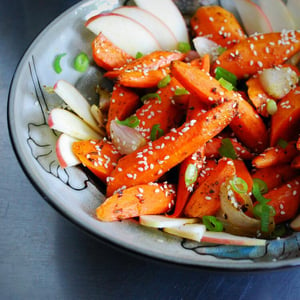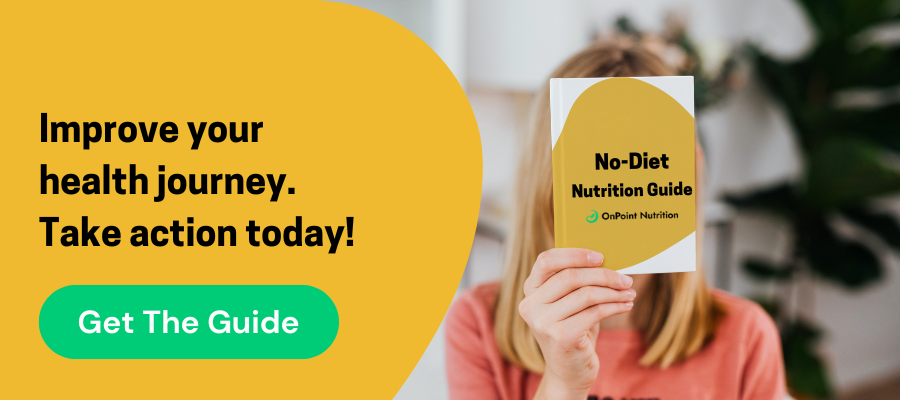
 “Paleo” has become a common buzzword when it comes to weight loss. But what is this weight loss method really about? Upon what science is its nutrition based? Our goal is to educate you about Paleo history, summarize its food recommendations, show you how it compares to OnPoint Nutrition Counseling, and explain why Paleo may not be the best way to structure your diet, weight loss, and Nutrition Counseling goals.
“Paleo” has become a common buzzword when it comes to weight loss. But what is this weight loss method really about? Upon what science is its nutrition based? Our goal is to educate you about Paleo history, summarize its food recommendations, show you how it compares to OnPoint Nutrition Counseling, and explain why Paleo may not be the best way to structure your diet, weight loss, and Nutrition Counseling goals.
At its core, the Paleo diet is a high protein, low carbohydrate nutrition philosophy that mirrors what people ate during the Stone Age (the era of modern man, ending ~8,000 years ago):
-
Protein Intake: Meat and seafood represent the main sources of protein nutrients, which targets 19-35% of total calorie intake
- Lower Carbohydrate Intake: Carbs represent 35-45% of daily calories, derived from non-starchy fresh fruits and vegetables
- Moderate Fat: Include mono-unsaturated fats and Omega-3 fats, while eliminating trans fats and polyunsaturated fats
- High Fiber: Obtained from fruits and vegetables
- High Potassium and Low Sodium: To be consumed at a ratio of at least 5 to 1, which Cordain claims is the ratio in unprocessed, fresh foods
The Paleo macronutrient breakdown is very similar to the balanced approach at OnPoint Nutrition Counseling for both weight loss and weight maintenance. Here is how the macronutrient breakdown from a Paleo diet compares to OnPoint Nutrition Counseling and the recommended breakdown from the U.S. Department of Agriculture and U.S. Department of Health & Human Services (HHS)
However, people who follow the Paleo lifestyle may find their meals and nutrition options to be very limiting, even if they are not trying to lose weight. The paleo nutrition diet excludes eating dairy, grains and legumes (peas, beans, peanuts). Because our prehistoric ancestors had not learned to domesticate animals, dairy products do not fit into the Paleo philosophy. However, let’s break down the ban on legumes and grains in a bit more detail:
Legumes: Strict Paleo followers do not eat legumes because they contain phytates and lectins. Lectins are naturally occurring proteins that bind with sugars and assist in normal cell functions in both plants and animals. Lectins are thought to play a role in immune function, cell growth, cell death, and body fat regulation. In general, the human GI system cannot digest lectins, and these molecules move through our bodies unchanged. Paleo enthusiasts avoid legumes because in high concentrations, lectins can trigger an immune response, which may cause bloating, diarrhea, or nausea.
Paleo enthusiasts also shun legumes because they contain phytic acid, the storage form of phosphorous that forms the backbone of both DNA and RNA. Phytates can bind with minerals in the digestive tract and prevent them from being absorbed by the body. Like lectins, many foods you eat contain phytates, including seeds, beans and nuts. Fortunately, your body has natural processes to regulate phytate levels in the gut. Although phytates may be harmful to people with mineral deficiencies, phytic acid can also bind to heavy metals (cadmium, lead) for removal from your body. Their antioxidant properties also bind free-radicals. For this reason, many researchers hypothesize that phytates may help the body to fight cancer and cardiovascular diseases.
Fortunately, soaking, cooking, and fermenting legumes deactivates the lectins and phytates that may disrupt digestive processes and mineral absorption.
Grains: Although whole grains were not a staple of pre-historic man (because the innovation of modern farming had not been discovered yet), it is inaccurate to characterize whole grains as harmful to one’s health. As noted in a recent Huffington Post article, recent research suggests that eating whole grains is helpful to our health and is negligible in terms of inflammation. From a Nutrition Counseling perspective, we recommend incorporating grains into a well-balanced diet during both weight loss and weight maintenance.
The Final Word
The Paleo diet encourages many aspects to healthy living that we recommend during Nutrition Counseling with our clients: target higher intake of fruits and vegetables that provide a healthy source of fiber and adequate carbohydrates, focus on lean protein such as chicken and fish, and supplement your diet with healthy sources of mono-unsaturated fats.
However, Paleolithic people lived a very different type of lifestyle than modern humans, as food scarcity dictated much of an individual’s behavior and food intake. Further, the underlying logic behind the Paleo diet has its flaws. Contrasting research has shown that prehistoric man ate a variety of foods depending on where he lived, and that humans have evolved to be flexible eaters of many nutrient sources. Recommending a strict diet that draws conclusions about the general superiority of pre-historic health and life-expectancy in relation to modern environmental factors may be misleading.
Our biggest concern with the Paleo diet relates to implementation. The diet’s hard-and-fast rules can restrict making consistently healthy food choices because separating all foods into “good” and “bad” categories can lead to poor long-term habits and weight regain. During Nutrition Counseling, we prefer to teach you how to balance your food intake to include all available food groups, and how to optimize your choices within each category. We believe that whole-grain foods, legumes and dairy have the appropriate time and place in every diet, whether during weight loss or weight maintenance. We know that you will find yourself in situations where only these modern foods are available, and we want you to know that you can make healthy and nutritious choices regardless of your environment and surroundings.
Avoid fad diets and learn long-term, sustainable approaches to weight loss by downloading our No-Diet Nutrition Guide



